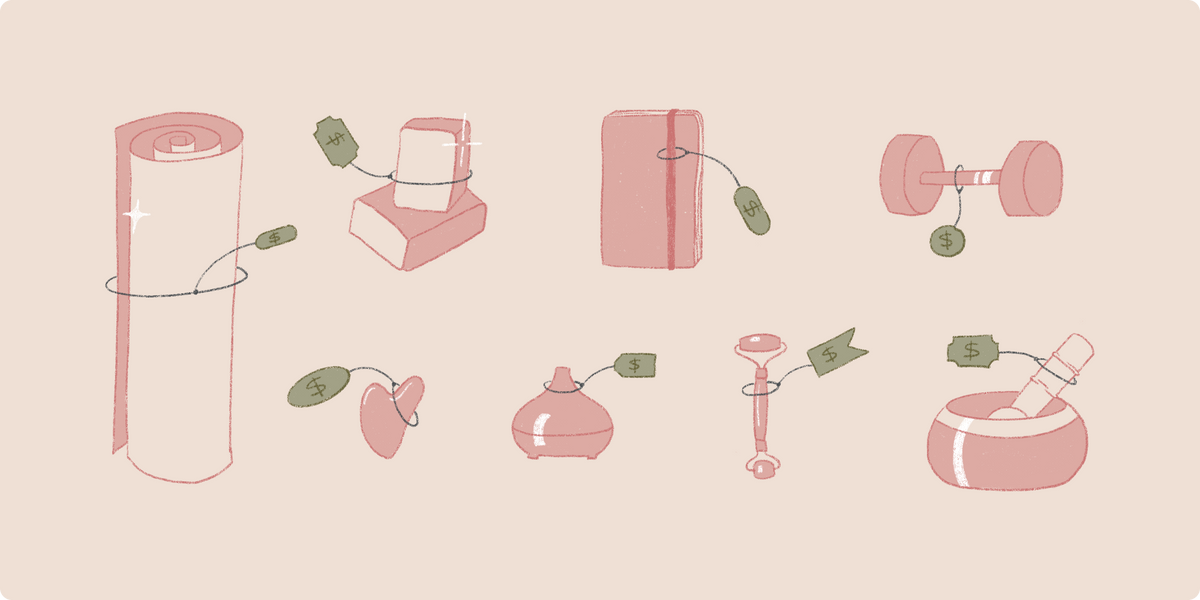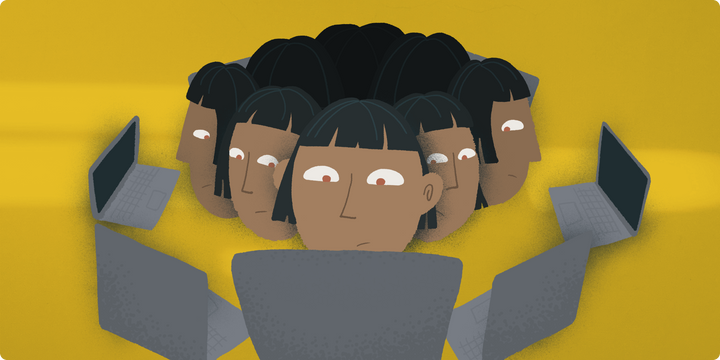The Objects of Self-Care
On the Commodification of Wellness

I’m sure you’ve felt it too in recent years, especially during the lockdowns. People recentred themselves to their homes, their selves and (re)discovered rituals and little habits that make them feel good. Athleisurewear became a thing in the fashion industry. People invited self-awareness and gratitude practices in their daily lives. We’ve been seeing for a long time now the increasing popularity of yoga and meditation. Self-care evolved to a point where your skincare routine might be a mental health ritual for you. Mental health forged its way in the public discourse to the point of becoming a buzzword, naturally.
A lot of this has tremendously positive benefits. Social media platforms showcase very diverse voices in this scene. We’re looking at mental health from the lens of body acceptance, gender identity, learning disorders, disability, race. People are embracing less work-centered schedules. We've finally cancelled commuting!
Of course, some of these things were inevitable consequences of being locked inside our homes but still, at a higher level, these things were needed and I like to believe they would’ve found their way into the trends of the time no matter what. Our brains are more stimulated than ever so it’s natural for mental health to have become such a prominent part of culture.
The rise in popularity of these habits and rituals is yet another proof that society is failing to care for us. Self-care culture is more than manicures and spa days. It's about self-preservation.[1]
The self-care culture is, in a way, a collective response to the chaos of the outside world, an ailment for our shared climate-anxiety, a communal coping mechanism to the increasing complexity of civilization. The emergence of this self-care culture can be seen as an act of resistance.
«Work has become intolerable.
Rest is resistance.»[2]
But what I can’t stop noticing is how most of these activities that make their way in people’s routines, schedules and homes require physical objects. The skincare industry is the most competitive market currently in the beauty sphere. Countless brands produce their own yoga mats with all the patterns and colours you could ever imagine (yes anything your mind can think of, even ones with highly specific library cards printed on them).
These new objects that now seem to be part of the 21st-century-living-starter-kit feel almost like an obligatory rite of passage. Everyone needs their yoga mat, blocks and straps, their workout outfits, their 10-step skincare routine (and I haven’t even counted the apparatus; guasha tools, quartz rollers, those horrifying LED masks that make you look like Jason Voorhees from Friday the 13th), their own full set of dumbbells, a couple pairs of comfortable joggers, cashmere loungewear, essential oil diffusers. The list goes on.
This grocery list didn’t magically appear. Capitalism managed to find its way into the mental health discourse by coming in and creating yet another set of new needs. (Directly contributing to more anxiety, FOMO, credit card debt, you get where I’m going.)
It's also a direct side effect of the lockdowns. Everyone was stuck at home, so online shopping was the next best activity to do in the evenings. Then Amazon moved countless boxes around the world and there we were, all with our own little spas and gyms inside our homes.
Capitalism has this way of sneaking into social phenomena and creating new open loops that we feel like we have to fill by consuming goods. Is that the dynamic of capitalism? Well, yes. Growth. Remember? Growth like cancer. Capitalism has it written in its DNA to find little doors like that to barge in and reproduce until all the living stuff in there has perished.
What’s particularly hard to appreciate about this dynamic in the context of mental health and self-care culture is that it just completely breaks the point. The whole movement originally came from truly marginalized communities and people with diagnosed mental health disorders. It came from those gaps in the healthcare and social systems where people are actually uncared for, long before it made its way to the mainstream. It made me realize that capitalism can find its way into all the things —even when they’re very well intentioned.
We’ve seen it with the hot yoga crave (or should I say scandal[3]) too, how yoga distanced itself from its roots and became a very lucrative industry (if you hadn’t noticed, yoga leggings now cost approximately $150). That’s the threat in capitalism distancing things from their roots: from those gaps, it creates needs.
The same is true for self-care. It’s now become almost a contest of which brands you can afford for your skincare, how many workout outfits you get to cycle through before laundry day, how many pockets your work-to-gym bag has, how that girl you can make the little morning routine montage on Tik Tok, or even how long you can fast for.
There has been a commodification of the symbols of self-care. These activities and the objects they implicate have become tokens. As long as we can show them off, we’re participating in the collective effort to heal our mental health. But are we? I just want to say it’s a shame that these movements of society, however important, crucial, well-intentioned, or wholesome they may be, always become consumption and trend and virality. How much of this can we attribute to social media platforms? It feels like even if a social movement didn’t have a physical or visual component to it, it would still manage to happen.
But maybe that’s precisely why the self-care thing worked so well. It has a very strong visual component, and a physical, concrete one with accessories and products. It was almost natural for it to become that viral phenomenon.
Self-care has a strong material dimension. That seems to be an important criteria for things to work well in consumerism.
It’s particularly tricky because those visual aesthetics are a large part of what makes self-care work. To surround ourselves with beauty, calm, harmony. It soothes the mind, takes the focus away from the ugliness of the outside world.
That also proves the point of why capitalism came right in. Self-care culture has these object-based rituals where beauty plays a large role in perceived value. Bingo.
Loosely borrowed from Anwulika Oputa quoting, among others, Audre Lorde, in her Culture of Self: Contemporary Symbols and Identities of Self-Care graduate thesis presentation for the SVA MA Design Research class of 2021 ↩︎
Check out Work is a false idol or the lying down movement ↩︎
The scandal that rocked Bikram yoga, The Guardian ↩︎
Further reading
- Haley Nahman's newsletter issue around Cope Culture
- The Millennial Obsession With Self-Care, by Christianna Silva for NPR
- The Dark Truths Behind Our Obsession With Self-Care by Shayla Love for Vice's Burnout and Escapism Issue
- The Politics of Conspicuous Displays of Self-Care by Jordan Kisner for The New Yorker's Culture Desk
- Just for funsies, We Fact-Checked Four of the Most Outrageous Claims in Gwyneth Paltrow’s Netflix Show by EJ Dickson for Rolling Stone



